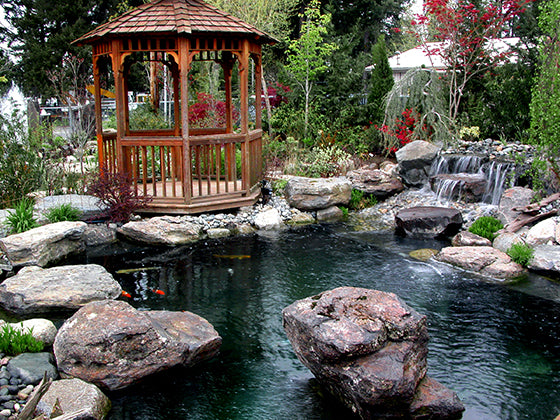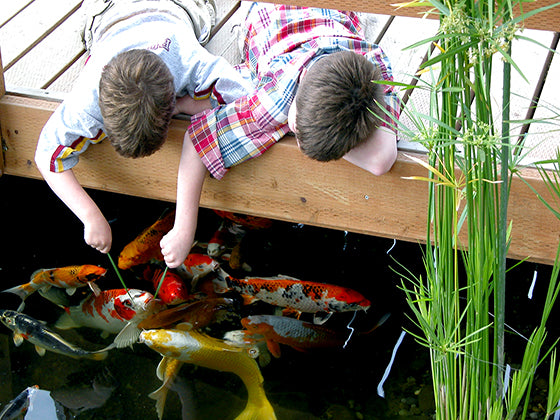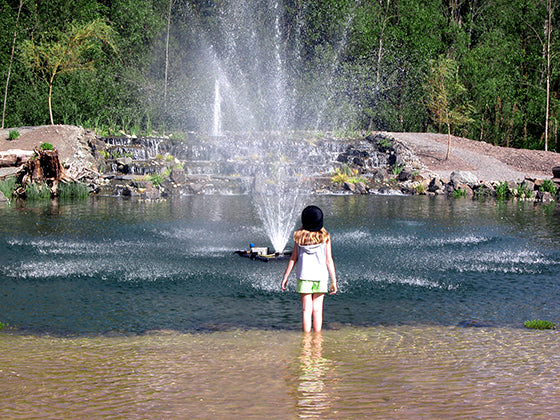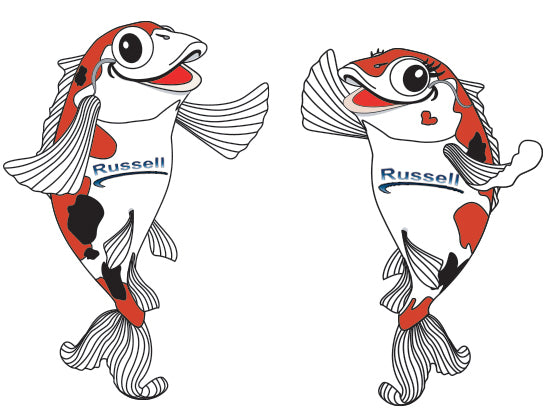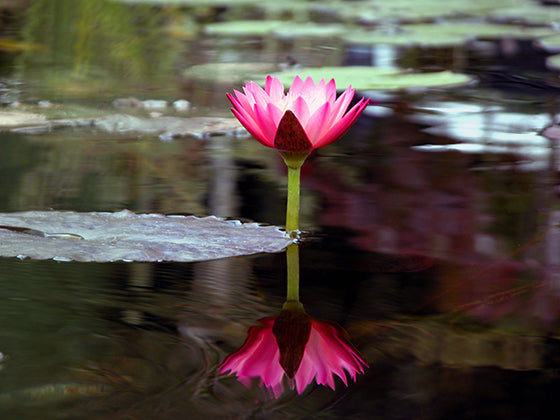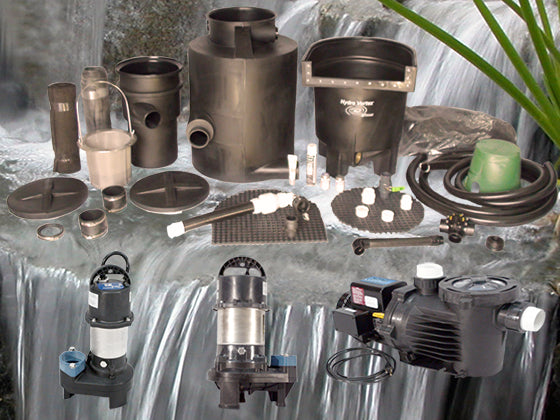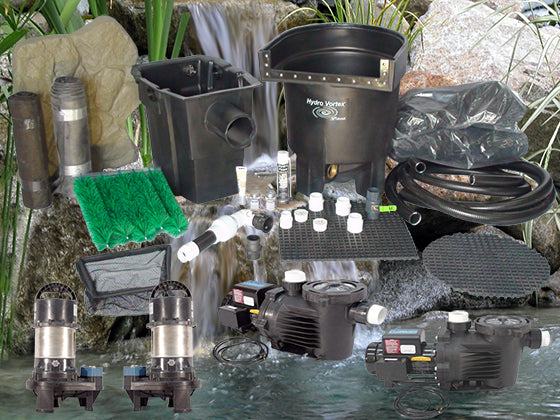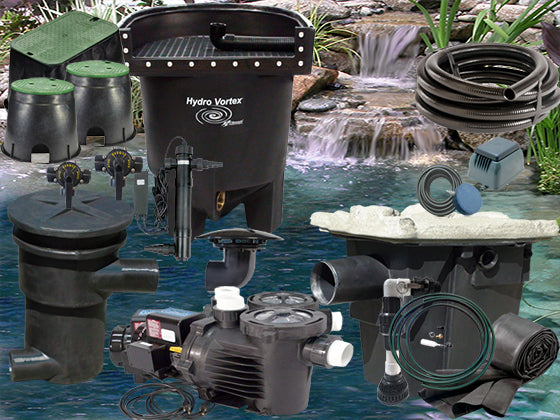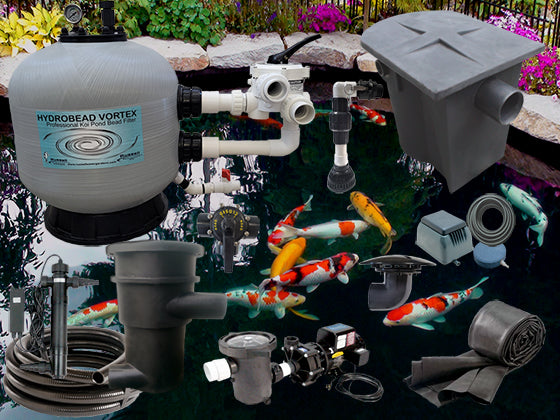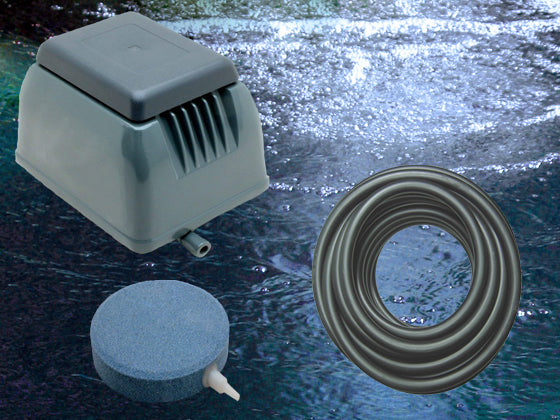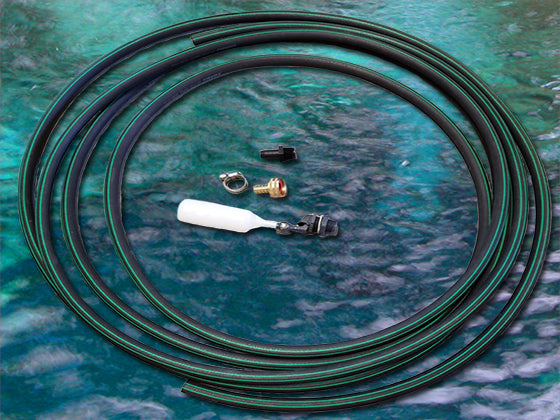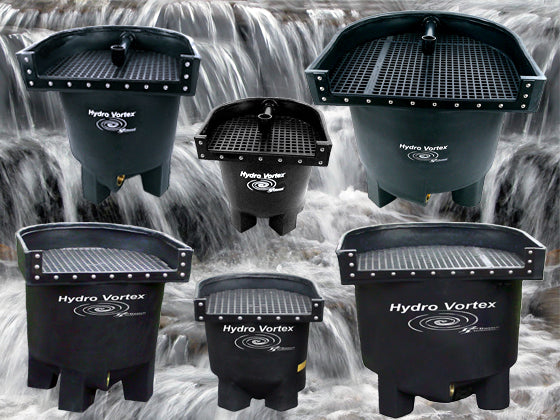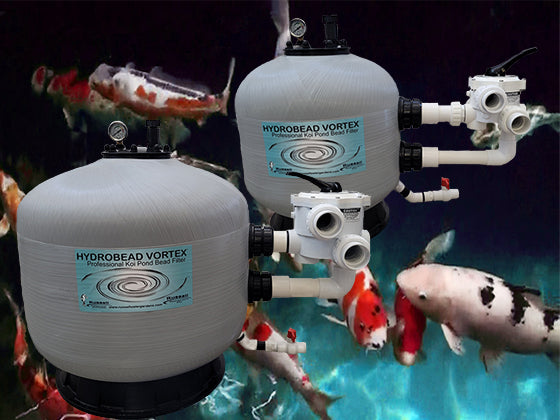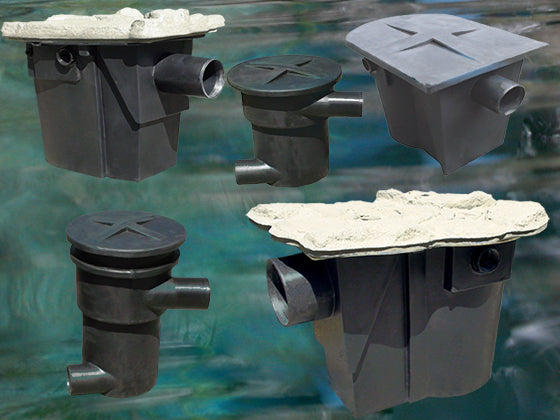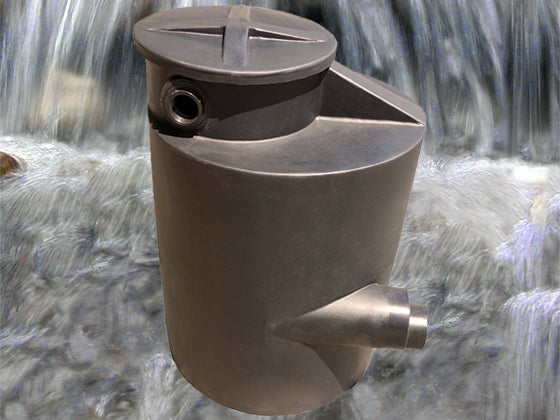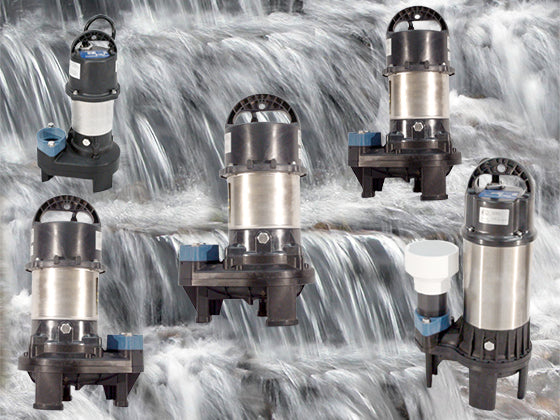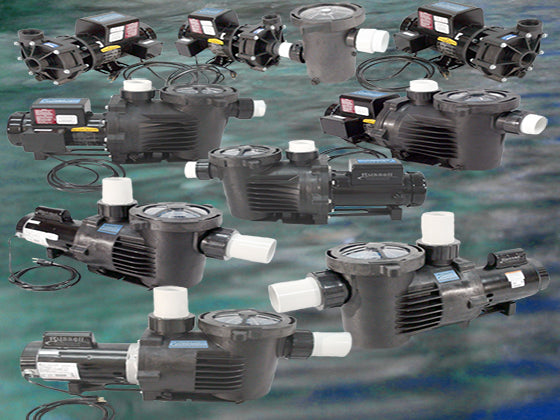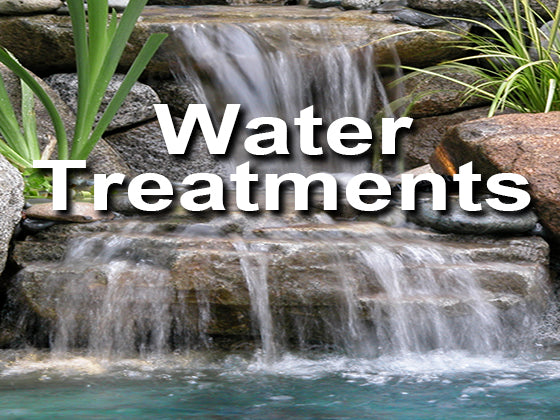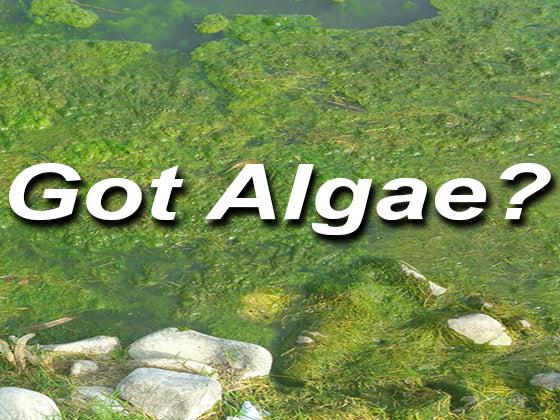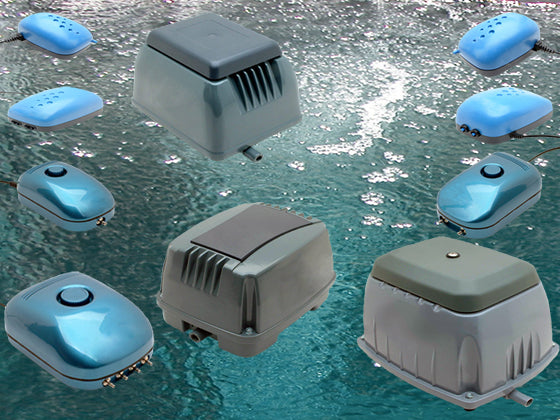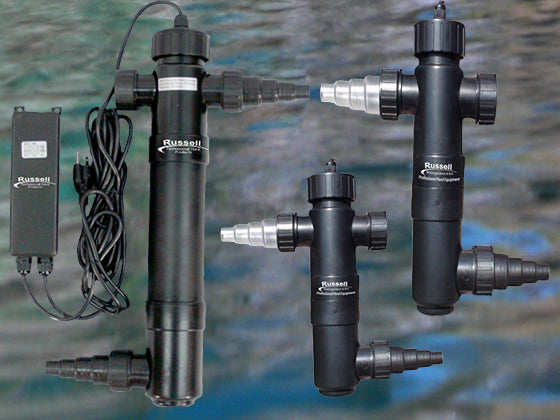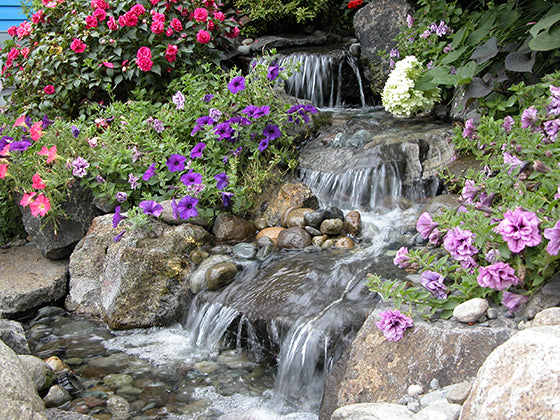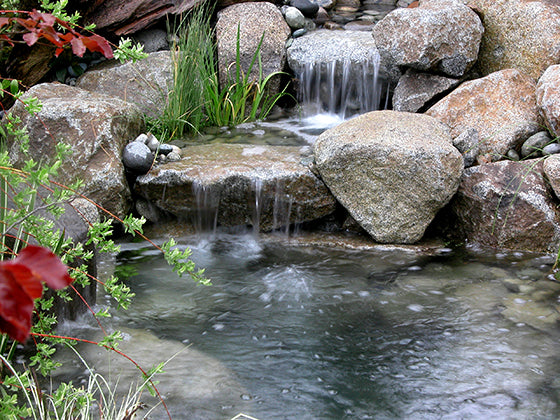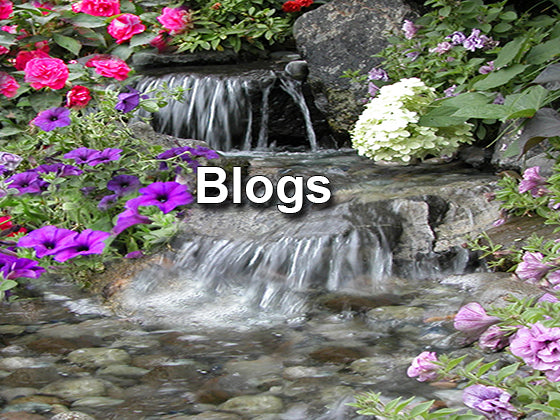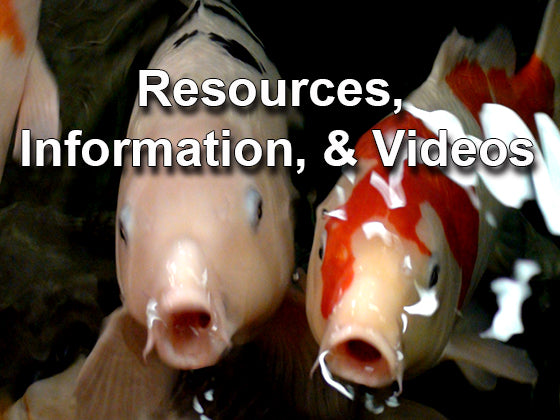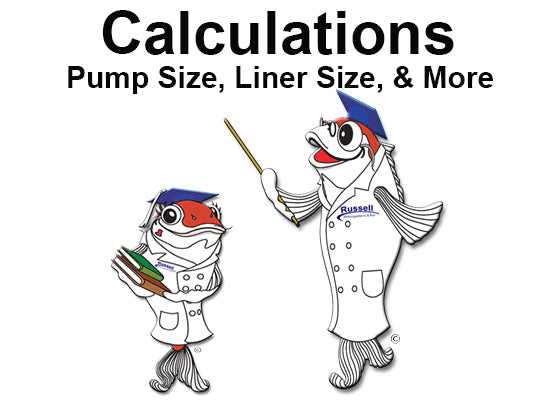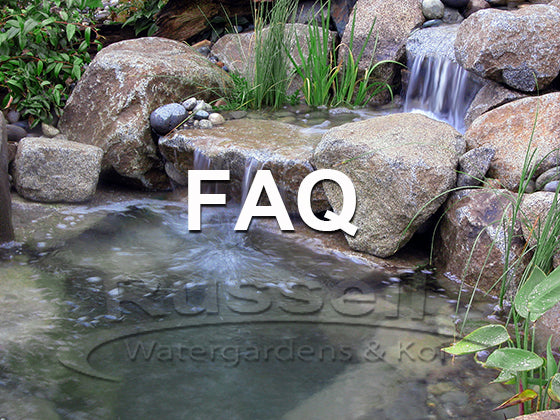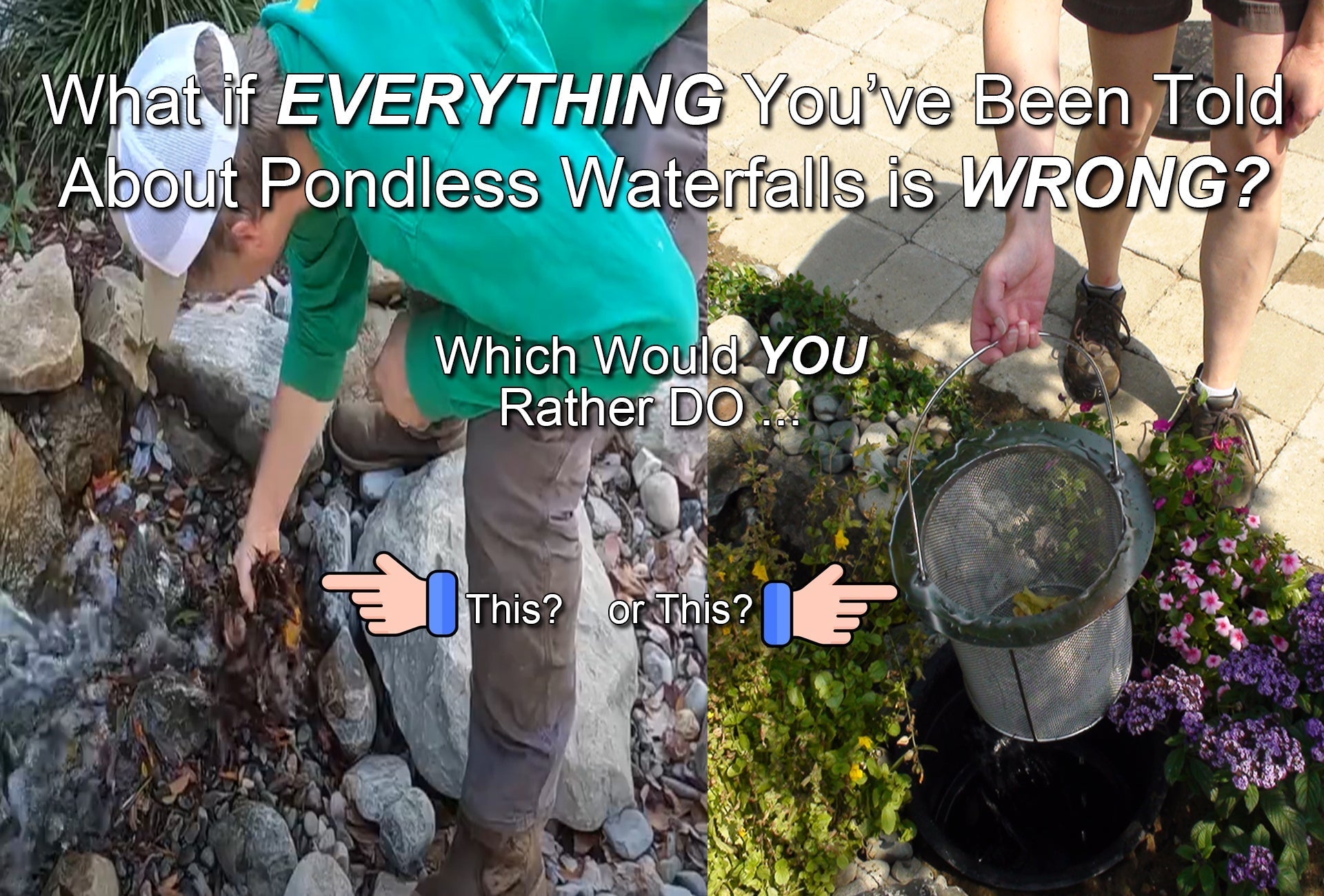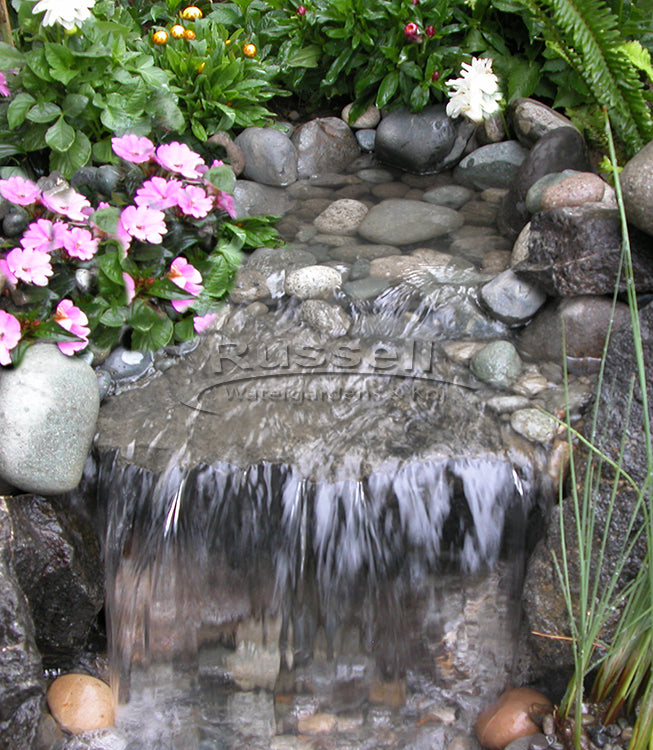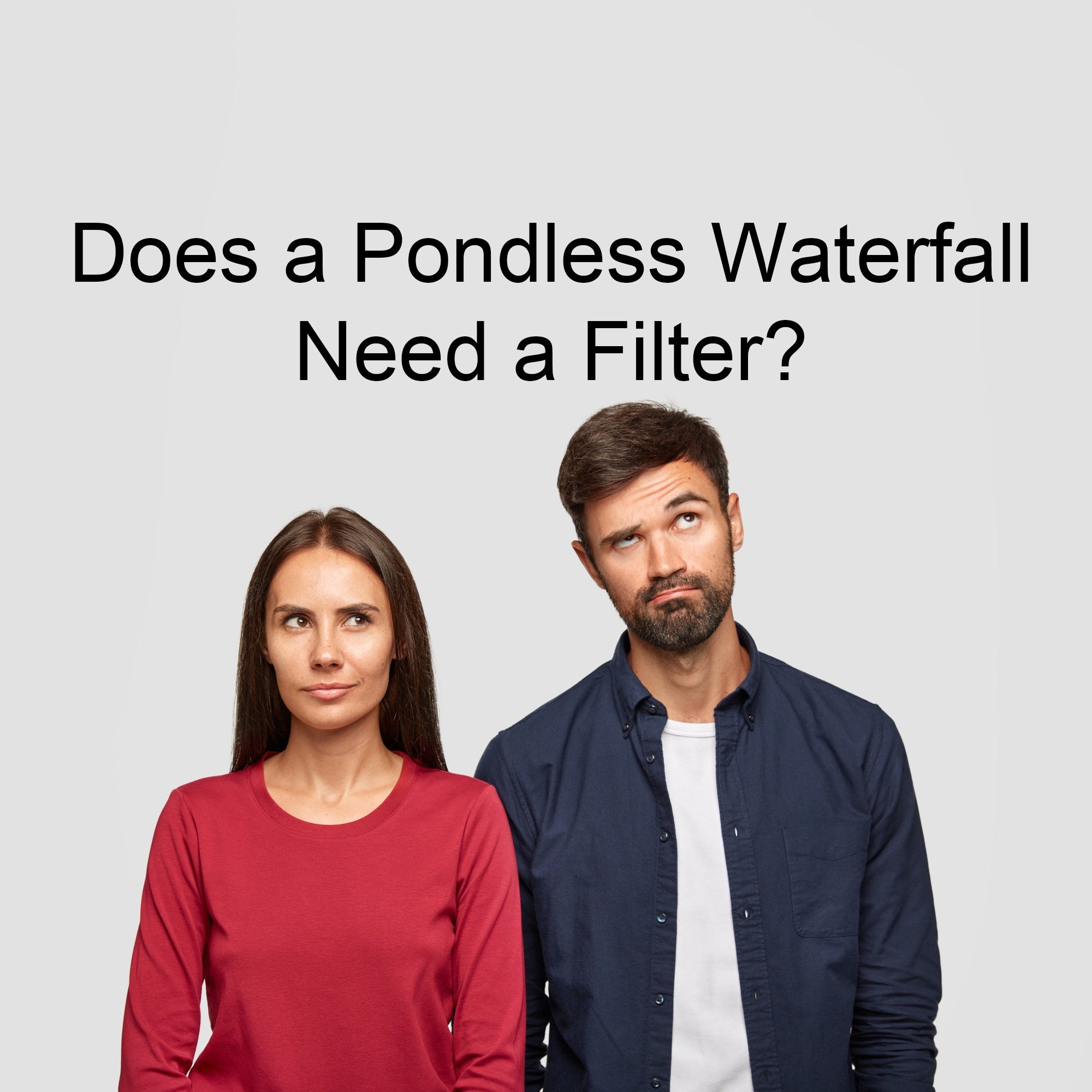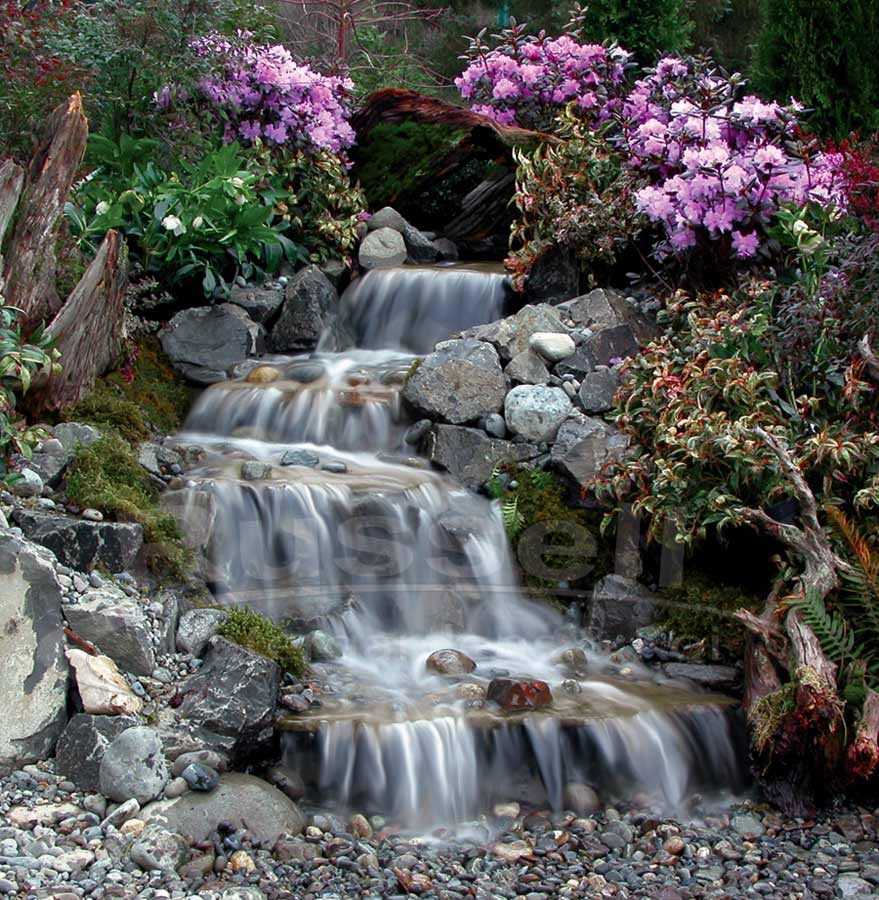Does a pondless waterfall need a filter?
The short answer? Yes.
But the better question is: why?
Picture this—wash and wax your car, then leave it outside for a few days. What happens?
Dust, pollen, leaves… maybe a bird bomb or two.
Now imagine that landing in your pondless waterfall—every single day.
Filters remove that stuff.
That’s why swimming pools have filters. So do koi ponds. So do water garden ecosystem ponds.
So why wouldn’t your pondless waterfall have one?
According to Google, a filter is “a porous device that removes impurities from a liquid or gas.”
But nearly every pondless waterfall kit sold online contains no actual filter—just a spillway or waterfall starter, a slotted pump vault, and a reservoir buried under rock and gravel.
Let’s be clear:
A spillway is not a filter.
It’s just a diffuser. It slows and spreads the flow from a pipe—but it doesn’t remove leaves, sediment, or organic debris.
Yet many retailers and installers say:
“You don’t need a filter—there are no fish,” or “The basin’s covered—debris won’t get in.”
But let’s be honest: debris always gets in.
Dust, pollen, leaves, dog hair, bird droppings—you name it, it ends up in the system.
And without a filter?
It just sits there—clogging, rotting, and feeding algae.
Would you build a swimming pool without a filter just because it has no fish? Of course not.
At Russell Watergardens, we design systems with easy, effective, and routine maintenance in mind—because you’re the one who’ll be cleaning it… or paying someone a lot of money to do it for you.
Look online and you’ll see most pondless kits don’t include any real filtration.
Just a spillway, a vault, and some matrix blocks buried in gravel.
No sediment control. No biological filtration. No pre-filtering.
Russell Pondless Systems™ are different.
We build in true multi-stage filtration—mechanical, biological, and vortex sediment separation—so your system stays cleaner, runs better, and lasts longer… with less work.
Ask yourself:
Does the wind blow?
Does it rain?
Is there dust and pollen in the air?
Do birds bathe—and poop—in waterfalls?
Do dogs play in them and shed?
If you answered yes to any of those…
Ask yourself: Where does all that stuff go—if there’s no filter?
The answer?
Nowhere. It stays in your system.
And that’s why filtration isn’t optional. It’s essential.
Filters remove the gunk and impurities that feed algae—before your waterfall turns into a a green slimy mess.
Because in the end, a pondless waterfall will only stay as beautiful… as it can be maintained.
And filtration is the key.
We invented the Original Pondless Waterfall.
As we’ve shown in other videos and blogs, the very first publicly seen pondless waterfall was built at our former store in Redmond, Washington—just outside Seattle.
In 2000, we bought a 3-acre plant nursery.
By 2001, we had transformed it into a full-scale water feature destination.
We built dozens of working displays—ponds of all types, streams, fountains, and waterfalls—including a massive 100-by-80-foot lake stocked with rainbow trout, roaring 40-foot-wide walk-through waterfalls, fountains, and even a kid-friendly sand beach.
Our store became a hands-on showroom and training center.
Every month, we hosted build-it-yourself classes for homeowners and contractors.
We taught how to build koi ponds, ecosystem ponds, pondless waterfalls, rock columns, and fountains.
In those early days, we made our own slotted pump vaults from modified sump basins, buried under rock and gravel for our pondless fountains and rock columns.
Then came the breakthrough:
What if a waterfall could work just like those fountains?
Where all the water disappears into a rock-and-gravel basin—and when the pump shuts off, it’s stored safely underground and out of sight.
That’s what makes it pondless.
And if you can see standing water in a “pondless” reservoir when the pump is off—it’s not truly pondless. (And mosquitoes will be the first to tell you.)
Later, Aquascape released their Snorkel and Centipede units for up-flow wetland filtration.
We repurposed them for down-flow use in pondless applications—replacing our sump basins with this new setup to increase water flow to the pump.
We rebuilt one of our pondless waterfalls using an Aquascape BioFalls filter at the top, and the Snorkel and Centipede units buried beneath the gravel basin.
It was the first time a pond filter box and bog filtration system were combined in a pondless waterfall.
We shared the idea with Aquascape—and they saw its potential right away.
With our permission, they published our photo and credited us in their catalogs and magazines.
That photo—and that system—sparked an entire industry.
Thanks to our innovation and Aquascape’s marketing, pondless waterfall kits exploded in popularity.
Soon, every major competitor was offering their own version—based in some way on the rock-and-gravel reservoir design we pioneered.
Aquascape later redesigned the system to cut shipping costs—replacing the BioFalls filter with a smaller spillway and swapping the Snorkel and Centipede for a slotted pump vault and disassembled matrix blocks.
But one thing stayed the same:
The rock-and-gravel covered reservoir—the signature feature of the Original Pondless Waterfall.
Everyone loved the look. Loved the innovation. Loved the concept.
But no one asked the most important question:
“How do you maintain it?”
Back then, pond kits were booming. We were one of Aquascape’s largest contractors in the U.S. We built hundreds of ponds across the Seattle area.
We even hosted the Northwest’s largest Parade of Ponds—an annual charity tour for Children’s Hospital.
Every pond we built had two key components:
A pond skimmer to catch leaves and debris, and a biological waterfall filter to remove particulates and break down dissolved organics.
Maintenance was very basic:
Empty the skimmer regularly, and clean the waterfall filter once a year.
Basic maintenance—but even basic filtration beats no maintenance.
Because algae needs a food source—and that source is debris and organics that remain in the system.
The same principle applies to pondless waterfalls.
Our Original Pondless Waterfall was a prototype. A proof of concept.
We invented it—and we shared it with Aquascape.
But in those early days, we hadn’t yet solved the biggest issue:
How do you clean and maintain it?
Our busy retail store was a living laboratory.
We learned by doing—right in front of our customers.
Every success and every misstep played out in real time, teaching us what really worked… and what didn’t.
Here’s what we discovered:
The rock-and-gravel reservoir acted like a skimmer—trapping wind-blown leaves and debris.
But unlike a skimmer with a net or basket you can empty, rock and gravel had no easy way to clean it.
Waterfalls actually forced debris deep into the rocks—making it nearly impossible to remove.
And the waterfall filter box?
It wasn’t much better. The filter pads clogged with gunk, forcing us to pull them out and clean them by hand.
Simple fact:
Algae needs a food source.
And trapped organic debris is an all-you-can-eat buffet.
That’s Pond Chemistry 101.
So whether it’s a pond or a pondless waterfall—removing debris is essential.
But how do you clean a rock-and-gravel basin… without crawling around, hand-picking debris?
That’s the problem we set out to solve.
And solving it is exactly what led to the creation of the Russell Pondless Systems™ Ultimate Easy to Clean design.
Back then, there were no tutorials.
No YouTube. No “how-to” guides for cleaning pondless waterfalls.
We had to figure it all out ourselves—through real-world trial and error.
Over time, algae started showing up.
It coated the rocks. It spread across the reservoir.
And we realized: we couldn’t get the debris out of the rock and gravel.
Leaf blowers didn’t work. Shop-vacs didn’t work.
Filter pads kept clogging with slimy, organic gunk—all of it feeding algae.
Leaves, dog hair, feathers, debris—once they get trapped, they rot.
They clog your system and turn your clean waterfall into a green, slimy mess.
Our invention kicked off a global trend.
But no one asked the one question that matters most:
“How do you clean it?”
Fast forward to today—and now, Certified Aquascape Contractors are making YouTube videos proudly showing how difficult, messy, and time-consuming it is to clean a rock-and-gravel pondless waterfall in an effort to get you to hire them to clean it.
Watch any of those videos and you’ll see exactly what we’re talking about.
We didn’t want a water feature that looked beautiful at first…
then turned into a maintenance nightmare.
We wanted beauty and simplicity.
So we asked:
What if a pondless waterfall system was actually easy to clean?
That’s what led to the birth of the Russell Pondless Systems™ Ultimate Easy to Clean Pondless Waterfall in 2007.
We replaced the gravel “pre-filter” with a real pre-filter:
The HydroSieve™.
It catches debris in a stainless-steel basket you can empty in seconds—no mess, no hand-picking.
We replaced the filter pad box with the Hydro Vortex™ waterfall filter.
It’s a patented, backwashable bio-filter that cleans itself—just by turning two valves.
No heavy, smelly pads. No hands in the muck.
The result?
We cut algae growth by over 95%—simply by removing its food source.
Here’s how it works:
-
The HydroSieve™ pre-filter acts like a pond skimmer—trapping leaves, dog hair, feathers, and wind-blown debris for easy removal.
-
The HydroChamber™ stores the water in a clean underground tank—no gravel, no gunk.
-
The Hydro Vortex™ waterfall filter starts the waterfall while removing dissolved organics and impurities—whether or not there are fish.
Water has always attracted debris.
Leaves, pollen, dust, and dirt—they’re coming for your water feature.
That’s why all well-designed pools and ponds include two things:
A skimmer for debris…
And a filter for impurities.
So we asked the obvious question:
Why wouldn’t a pondless waterfall include both?
And that’s exactly what we did.
Compare the diagrams of our Easy-to-Clean Water Garden Ecosystem Pond Kit and our Ultimate Easy-to-Clean Pondless Waterfall Kit—
You’ll see they both include two essentials:
An easy-to-clean pre-filter and a backwashable waterfall filter.
Because here’s the truth:
Simple, routine maintenance always beats expensive annual cleanouts.
Without filtration, a pondless waterfall is nothing more than a debris trap.
Cleaning it means hand-picking rotting leaves, pressure-washing algae-covered rocks, and draining the reservoir—again and again.
It’s messy, time-consuming, and wastes water.
And it’s totally avoidable.
With a Russell Pondless System™, you get beauty without the burden.
No mess. Just clean waterfalls and clear water—year after year.
Don’t take our word for it.
Go to YouTube and search:
“How to clean a pondless waterfall.”
Watch any of the many videos you’ll find—and you’ll see what we’ve been saying all along:
Cleaning a rock-and-gravel pondless waterfall is no easy task.
That’s why we created the Russell Pondless Systems™ Ultimate Easy-to-Clean Waterfall—
A smarter, common-sense solution that makes maintenance fast, simple, and eliminates the need for annual deep cleanings.
But what do retailers and Certified Aquascape Contractors tell you to do?
Add beneficial bacteria, algaecides, or even a copper ionizer to “control” algae.
But here’s the problem:
None of those solve the root cause of algae—organic debris.
And here’s another problem:
A typical pondless waterfall spillway isn’t a filter.
It has no biological media, no oxygen-rich water flow, and no home for beneficial bacteria to thrive.
So what happens?
You spend money on treatments… that can’t actually work.
And algaecides? That’s like giving your waterfall drugs.
Sure, the algae dies—but now you’ve got dead algae in a system with no filter, which only feeds… more algae.
So you add more algaecide.
And pretty soon, your waterfall becomes a junkie—hooked on chemicals.
That’s not maintenance—that’s setting your money on fire.
That’s why we engineered the Hydro Vortex™ Biological Waterfall Filter—
With real, high-surface-area Hydro FilterSilk™ bio-media and the HydroFlush™ patented backwash system.
It provides an ideal environment for beneficial bacteria to live, multiply, and clean your water—naturally.
No chemicals. No gimmicks. Just clean water.
Paired with the HydroSieve™ Pre-Filter, which traps leaves, dog hair, bird feathers, and debris—
And empties in seconds with a quick rinse of the stainless-steel basket.
Here’s the bottom line:
Beneficial bacteria aren’t enough on their own.
If debris stays in the system, it rots and feeds algae.
And that means you’ll be stuck paying for expensive deep cleanings year after year.
Ask a Certified Aquascape Contractor what they charge for that service.
Then ask yourself:
Do you really want to pay someone every year to clean a system that’s not even designed to be cleaned?
Or would you rather own a system that’s so easy to clean—your kids can do it?
We designed a better way.
Russell Pondless Systems™ are built for homeowners—not for the ongoing income of your installer.
After relocating to sunny Phoenix, Arizona, we showed one of our systems to a local Certified Aquascape Contractor.
We walked him through how easy it is to clean—no mess, no hassle, no service call. We showed him how the system is so easy to clean that homeowners can do it themselves.
His response?
“I don’t want my customers cleaning it themselves. That’s taking money out of my pocket.”
That says it all.
Sadly, many contractors install hard-to-clean pondless systems on purpose—because they want the annual cleanout work.
We think that’s a disservice to homeowners.
At Russell Watergardens, we do things differently.
We design filtration systems for real life—not recurring service calls.
Think about it:
Do swimming pools get drained and pressure-washed every year?
Of course not.
They’re built with filtration systems that support routine maintenance—not expensive, annual overhauls.
And your pondless water feature should work the same way.
With a Russell Pondless Systems™ Ultimate Easy-to-Clean Pondless Waterfall, routine maintenance is simple.
Here’s how it’s done:
-
Step 1: With the pump running, use a standard garden hose and spray nozzle to rinse leaves, debris, and sediment from the waterfalls and streambed—let it all flow downstream into the HydroSieve™ Pre-Filter.
-
Step 2: Open the HydroSieve™, remove the stainless-steel filter basket, and give it a quick rinse.
-
Step 3: Turn off the pump.
-
Step 4: Open the Hydro Vortex™ Filter drain valve and let it completely drain.
-
Step 5: Turn the HydroFlush™ valve to "Backwash" and restart the pump.
The filter backwashes automatically in seconds, using very little water.
When the drain water runs clear, the filter is clean.
Close the drain valve, return the HydroFlush™ valve to “Filter,” and you’re done.
An automatic fill valve in the HydroChamber™ will top off the system.
No mess. No downtime.
No hand-picking. No draining. No pressure-washing. No scrubbing.
Most homeowners can clean a Russell Pondless System™ in just minutes—
Saving hundreds to thousands of dollars over the life of their waterfall.
Russell Pondless Systems™ make maintenance easy—and best of all, free.
So, does a pondless waterfall need a filter? Absolutely.
In fact, it needs two:
-
One to catch leaves and debris: the HydroSieve™ Pre-Filter
-
One to remove fine particles and dissolved organics: the Hydro Vortex™ Biological Waterfall Filter
Without both, your pondless waterfall becomes a debris pit—a perfect breeding ground for algae.
And you’ll be stuck paying for annual deep cleanings your contractor is counting on.
But with a Russell Pondless System™, you get:
-
Less algae
-
Cleaner water
-
Faster maintenance
-
And a much lower cost of ownership
All of which adds up to real savings—money you can spend on your family, not on expensive annual cleanings.
Because we built a system that works for you—not against your wallet.
Still not convinced?
Try this:
Pour a glass of water from a typical rock-and-gravel pondless waterfall with no filtration.
Then pour one from a Russell Pondless System™.
The difference is crystal clear. Literally.
Pondless waterfalls do need filtration.
And if you want yours to stay as clean and beautiful as the day it was built—
Russell Pondless Systems™ are the only clear choice.


